Key Takeaways
1. Memory is a complex, multicomponent system essential for daily functioning
Everything in life is memory, save for the thin edge of the present.
Memory permeates our lives. Without it, we would be unable to speak, read, identify objects, navigate our environment, or maintain personal relationships. Memory allows us to recall past events, learn new information, and shape our future actions. It is not a single entity but a collection of interconnected systems and processes that work together to create our sense of self and reality.
Memory systems include:
- Sensory memory: Holds information from our senses for a brief moment
- Short-term memory: Temporarily stores information for immediate use
- Working memory: Manipulates and processes information in the short-term
- Long-term memory: Stores information for extended periods, potentially a lifetime
These systems interact and influence each other, allowing us to function effectively in the world. Our memories shape our perceptions, decisions, and behaviors, making memory a fundamental aspect of human cognition and experience.
2. Encoding, storage, and retrieval are the three fundamental processes of memory
Any effective memory system – whether it's an audio- or videocassette recorder, the hard disk of your computer or even a simple filing cabinet – needs to do three things well. It has to be able to: encode (i.e. take in or acquire) information, store or retain that information faithfully and, in the case of long-term memory, over a significant period of time, retrieve or access that stored information.
Encoding is the process of converting sensory information into a form that can be stored in memory. This involves attention, perception, and interpretation of the information. The depth and quality of encoding significantly impact how well information is remembered later.
Storage involves maintaining encoded information over time. Different types of memory have different storage capacities and durations:
- Sensory memory: Milliseconds to seconds
- Short-term memory: Seconds to minutes
- Long-term memory: Days to a lifetime
Retrieval is the process of accessing stored information when needed. This can be influenced by various factors, including the strength of the memory trace, the context of retrieval, and the presence of retrieval cues. Effective retrieval often depends on how well the information was encoded and stored initially.
3. Working memory and long-term memory serve distinct but interconnected functions
The computer disk drive analogy also helps us to understand the distinction between encoding, storage, and retrieval in memory. Think about the huge amount of information on the Internet. This can be thought of as a massive long-term memory system. But, without effective tools for searching and retrieving information from the Internet, that information is essentially useless: it may be theoretically available, but is it practically accessible when you need it?
Working memory is like the RAM in a computer, temporarily holding and manipulating information for immediate use. It has limited capacity (about 7±2 items) and duration (seconds to minutes). Working memory is crucial for tasks such as mental calculations, problem-solving, and language comprehension.
Long-term memory, analogous to a computer's hard drive, stores vast amounts of information for extended periods. It includes:
- Episodic memory: Personal experiences and events
- Semantic memory: General knowledge and facts
- Procedural memory: Skills and how to perform tasks
The interaction between working memory and long-term memory is essential for learning and cognitive functioning. Working memory processes new information and retrieves relevant information from long-term memory, while long-term memory consolidates and stores information from working memory for future use.
4. Memory is reconstructive, not a perfect recording of past events
As we have seen in Chapter 1, even when we believe that we are literally 'playing back' some previous event or information in our mind, as if it were a videotape, we are actually constructing a memory from bits and pieces that we actually remember, along with our general (i.e. semantic) knowledge about how these bits should be assembled.
Memory is not a faithful reproduction of past events but a reconstruction influenced by various factors. This reconstructive nature of memory can lead to inaccuracies, distortions, and false memories. Our current knowledge, beliefs, and expectations shape how we remember and interpret past events.
Factors influencing memory reconstruction:
- Schemas: Mental frameworks that organize and interpret information
- Suggestions: External information that can alter memories
- Emotional state: Affects how we encode and retrieve memories
- Context: The environment and circumstances of encoding and retrieval
Understanding the reconstructive nature of memory has important implications for fields such as eyewitness testimony, therapy, and personal reflection. It highlights the need for caution when relying solely on memory for important decisions or judgments.
5. Mnemonics and organizational strategies can significantly enhance memory
Mnemonics allow a much more flexible use of the imagery mnemonic than the method of loci and can be dramatically effective. Indeed, they form the basis of most professional memory improvement techniques.
Mnemonics are memory techniques that use associations, imagery, and organization to improve retention and recall of information. These strategies take advantage of the brain's natural ability to remember visual and meaningful information better than abstract or unrelated data.
Common mnemonic techniques include:
- Method of loci: Associating information with specific locations
- Pegword system: Linking items to be remembered with pre-memorized words
- Acronyms and acrostics: Creating memorable phrases or words from initial letters
- Chunking: Grouping information into meaningful units
- Rhymes and songs: Using rhythm and melody to aid memory
Organizational strategies, such as categorization and hierarchical structuring, can also enhance memory by creating meaningful connections between pieces of information. These techniques not only improve retention but also facilitate more efficient retrieval of information when needed.
6. Eyewitness testimony is often unreliable due to memory biases and suggestibility
Elizabeth Loftus and her colleagues have explored in depth the misinformation effect. Specifically, Loftus and colleagues have repeatedly demonstrated distortions of memory after intervening, misleading questioning or information.
Eyewitness testimony is susceptible to various biases and distortions, making it less reliable than commonly believed. Factors such as stress, the presence of weapons, and the passage of time can significantly affect the accuracy of eyewitness memories.
Key issues affecting eyewitness testimony:
- Misinformation effect: Post-event information can alter memory of the original event
- Suggestibility: Leading questions can influence memory recall
- Source monitoring errors: Confusing the source of information in memory
- Confirmation bias: Tendency to seek information that confirms existing beliefs
- Stress and arousal: Can narrow attention and impair memory formation
Understanding these limitations is crucial for the legal system and highlights the need for corroborating evidence and careful questioning techniques in criminal investigations. It also underscores the importance of prompt and unbiased collection of eyewitness accounts.
7. Memory changes throughout the lifespan, with implications for development and aging
Taking into consideration the findings of both cross-sectional and longitudinal studies, some consistent findings have emerged from studies into ageing and memory. In particular, it is noteworthy that there are parallels between the profile of memory capacity manifested by children and that of older adults.
Memory develops and changes throughout life. In childhood, memory capacity gradually increases as the brain matures and cognitive strategies develop. During adulthood, memory generally remains stable but can be enhanced through practice and learning. In older age, some aspects of memory may decline while others remain stable or even improve.
Key points about memory across the lifespan:
- Infantile amnesia: Difficulty remembering events before age 3-4
- Working memory: Improves in childhood, remains stable in adulthood, may decline in old age
- Episodic memory: Develops in childhood, peaks in young adulthood, may decline with age
- Semantic memory: Continues to improve throughout life
- Procedural memory: Relatively stable across the lifespan
Understanding these changes is important for education, cognitive training, and addressing age-related memory concerns. It also highlights the brain's plasticity and the potential for lifelong learning and memory improvement.
8. Brain injuries and disorders can selectively impair specific memory functions
The amnesic syndrome is the purest example of memory impairment, involving some form of specific brain injury (typically involving those parts of the brain known as the hippocampus or the diencephalon).
Brain damage can affect memory selectively, providing insights into the organization of memory systems in the brain. Different types of memory impairments can result from damage to specific brain regions, illustrating the complex and distributed nature of memory processes in the brain.
Examples of memory disorders and their effects:
- Anterograde amnesia: Inability to form new long-term memories
- Retrograde amnesia: Loss of memories formed before the injury
- Prosopagnosia: Specific impairment in face recognition
- Semantic dementia: Loss of semantic knowledge
- Korsakoff's syndrome: Severe memory impairment due to thiamine deficiency
Studying these disorders has contributed significantly to our understanding of memory systems and has informed the development of rehabilitation strategies and potential treatments for memory impairments.
9. Improving memory requires active engagement and effective learning techniques
If you remember something for yourself (such as recalling the spelling of a word), this tends to strengthen the memory more effectively.
Enhancing memory involves active strategies and techniques that engage deeper levels of processing and create stronger, more elaborate memory traces. While there's no simple way to dramatically improve the biological "hardware" of memory, we can optimize our learning and recall processes.
Effective memory improvement techniques:
- Distributed practice: Spacing out learning sessions over time
- Elaborative rehearsal: Focusing on the meaning and connections of information
- Active recall: Testing yourself on the material
- Visualization: Creating mental images to represent information
- Contextual learning: Studying in environments similar to where you'll need to recall the information
- Meaningful organization: Grouping related information together
- Teaching others: Explaining concepts to reinforce understanding
By applying these techniques and maintaining a healthy lifestyle (including proper sleep, exercise, and nutrition), individuals can significantly enhance their memory performance and learning efficiency.
Last updated:
FAQ
What is "Memory: A Very Short Introduction" by Jonathan K. Foster about?
- Concise overview of memory: The book provides a clear, accessible introduction to the science of human memory, covering its mechanisms, types, and importance in daily life.
- Historical and modern perspectives: It traces the evolution of memory research, from early philosophical ideas to contemporary scientific models and experiments.
- Practical and clinical relevance: The book discusses memory’s role in everyday activities, its failures, and what happens when memory is impaired due to injury or disease.
- Broad scope: Topics include memory development, memory improvement techniques, and the impact of aging and disorders on memory.
Why should I read "Memory: A Very Short Introduction" by Jonathan K. Foster?
- Expert-written and accessible: Foster, an expert in the field, distills complex research into an engaging and understandable format for general readers.
- Comprehensive yet concise: The book covers essential concepts, key experiments, and practical advice without overwhelming detail.
- Relevance to everyday life: Understanding memory helps readers appreciate its role in learning, relationships, and personal identity.
- Critical thinking about memory: The book encourages readers to question common assumptions and recognize the strengths and limitations of human memory.
What are the key takeaways from "Memory: A Very Short Introduction"?
- Memory is multifaceted: Memory is not a single entity but a collection of different systems and processes (e.g., short-term, long-term, episodic, semantic, procedural).
- Active and reconstructive: Memory is an active, selective, and reconstructive process, not a passive recording of events.
- Influenced by context and meaning: What we remember is shaped by context, prior knowledge, emotional state, and the meaning we assign to information.
- Memory can be improved: Techniques such as spaced practice, mnemonics, and elaborative rehearsal can enhance memory performance.
How does Jonathan K. Foster define and explain the main types of memory in "Memory: A Very Short Introduction"?
- Short-term vs. long-term memory: Short-term memory holds information briefly and has limited capacity, while long-term memory stores information more permanently and with greater capacity.
- Working memory: A more active form of short-term memory, involving manipulation and processing of information (central executive, phonological loop, visuo-spatial sketchpad).
- Episodic and semantic memory: Episodic memory involves personal experiences and specific events, while semantic memory refers to general knowledge and facts.
- Procedural and implicit memory: Procedural memory involves skills and habits, often unconscious, while implicit memory refers to influences on behavior without conscious recollection.
What are the most important models and theories of memory discussed in "Memory: A Very Short Introduction"?
- Atkinson-Shiffrin model: Proposes a multi-store model with sensory, short-term, and long-term memory stages.
- Baddeley’s working memory model: Divides working memory into the central executive, phonological loop, visuo-spatial sketchpad, and episodic buffer.
- Levels of processing framework: Suggests that deeper, more meaningful processing at encoding leads to better memory retention.
- Encoding specificity principle: Emphasizes that memory retrieval is most effective when the context at encoding matches the context at retrieval.
How does "Memory: A Very Short Introduction" explain memory errors, forgetting, and inaccuracies?
- Forgetting mechanisms: Memory loss can result from decay over time or interference from similar memories.
- Reconstructive nature: Memory is reconstructive, leading to distortions, biases, and the blending of real and imagined events.
- Misinformation effect: Suggestibility and leading questions can alter or create false memories, as shown in eyewitness testimony research.
- Schemas and prior knowledge: Existing knowledge structures (schemas) can both aid and mislead memory, causing us to remember what fits our expectations.
What does Jonathan K. Foster say about memory impairment and amnesia in "Memory: A Very Short Introduction"?
- Amnesic syndrome: Typically results from damage to the hippocampus or related brain areas, leading to severe difficulties in forming new long-term memories (anterograde amnesia) and sometimes loss of past memories (retrograde amnesia).
- Preserved abilities: Despite amnesia, patients often retain intelligence, language, and procedural memory (skills and habits).
- Case studies: The book discusses famous cases like HM and NA, illustrating how different types of memory can be selectively impaired.
- Assessment and rehabilitation: Memory disorders are assessed with standardized tests, and strategies like errorless learning and external aids can help manage impairments.
How does "Memory: A Very Short Introduction" address memory development and aging?
- Developmental trajectory: Memory abilities develop gradually in childhood, with explicit memory and meta-memory skills maturing over time.
- Infantile amnesia: Most people cannot recall events from before age four, possibly due to biological and psychological factors.
- Aging and memory: Normal aging affects some memory systems (e.g., episodic and working memory) more than others (e.g., semantic and implicit memory).
- Dementia and MCI: The book discusses mild cognitive impairment and Alzheimer’s disease, highlighting early memory deficits and the importance of early detection.
What practical advice and methods for improving memory does "Memory: A Very Short Introduction" offer?
- Spaced practice: Distribute learning over time rather than cramming for better long-term retention.
- Elaborative rehearsal: Focus on the meaning of information and relate it to existing knowledge.
- Mnemonics: Use techniques like the method of loci, pegwords, and verbal mnemonics to organize and encode information more effectively.
- External aids: Employ diaries, digital reminders, and other tools to support memory, especially when natural memory is impaired.
What are the best quotes from "Memory: A Very Short Introduction" and what do they mean?
- "Everything in life is memory, save for the thin edge of the present." (Michel Gazzaniga): Highlights the pervasive role of memory in shaping our experiences and actions.
- "Remembering is not the re-excitation of innumerable fixed, lifeless and fragmentary traces. It is an imaginative reconstruction..." (Frederick Bartlett): Emphasizes that memory is an active, creative process, not a passive replay.
- "Education is what survives when what has been learnt has been forgotten." (B.F. Skinner): Suggests that learning leaves lasting, often unconscious, traces that influence future behavior.
- "Happiness is nothing more than good health and a bad memory." (Albert Schweitzer): Implies that forgetting can be adaptive and beneficial, preventing overload and distress.
How does "Memory: A Very Short Introduction" discuss the relationship between memory, identity, and personal experience?
- Memory and self: The book argues that memory is central to personal identity, enabling continuity of self over time.
- Loss of memory and identity: Amnesia and dissociative states can disrupt the sense of self, as seen in clinical cases and psychological disorders.
- Autobiographical memory: Episodic memory allows us to recall personal life events, shaping our narrative identity.
- Constructed experience: Each person’s memory of an event is unique, influenced by individual values, emotions, and prior experiences.
What are the main challenges and limitations in studying memory, according to "Memory: A Very Short Introduction"?
- Indirect measurement: Memory is inferred from behavior, not directly observed, making it difficult to isolate memory processes from other influences.
- Complexity and variability: Memory involves multiple systems and is affected by attention, motivation, context, and individual differences.
- Experimental design: Good research requires careful control of variables and appropriate comparison groups to draw valid conclusions.
- Ongoing questions: Despite advances, many aspects of memory—such as the precise mechanisms of storage and retrieval—remain unresolved, leaving room for future research.
Review Summary
Memory: A Very Short Introduction explores the complex workings of human memory, covering topics like memory types, retrieval processes, and common failures. Readers find it informative but sometimes challenging, praising its scientific approach while noting its academic language. Many appreciate the insights into memory's role in daily life and identity formation. The final chapter on memory improvement techniques is highlighted as particularly useful. Overall, readers consider it a solid introduction to the subject, though some desire more engaging writing or updated research.
Very Short Introductions Series Series

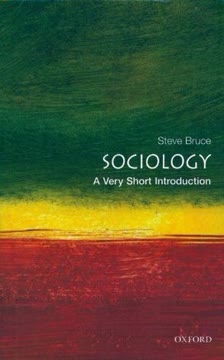
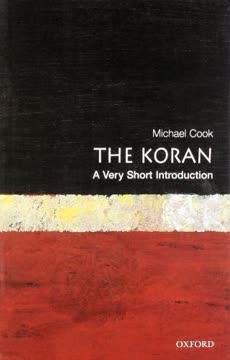
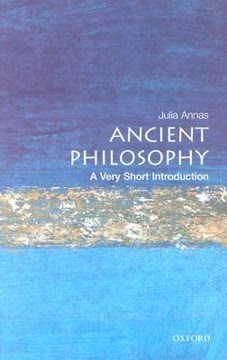


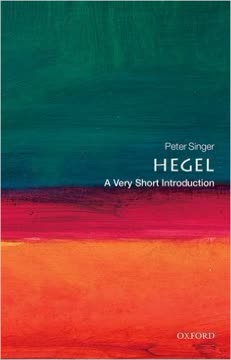
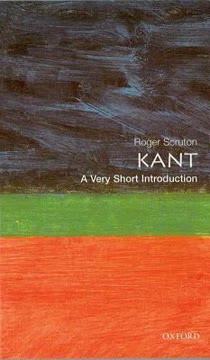
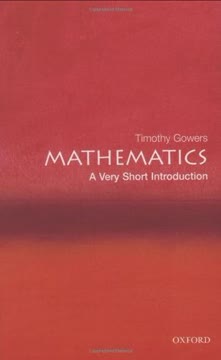
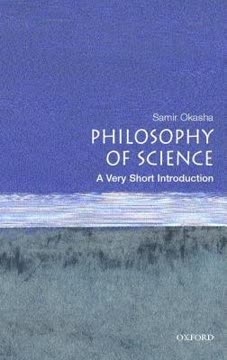
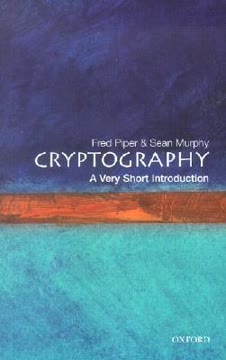
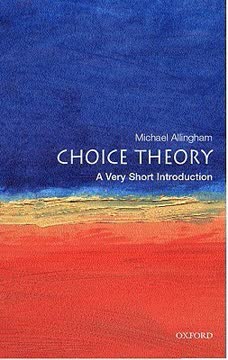
Similar Books
Download PDF
Download EPUB
.epub digital book format is ideal for reading ebooks on phones, tablets, and e-readers.









